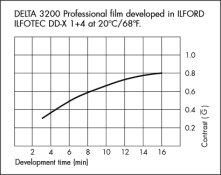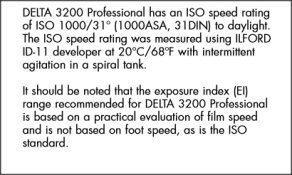Hey guys, I'm going on a trip to northern California in a couple of days, and I'll definitely be trying my hand at long-exposure photos at night. I'll be using the praised Acros 100, and Delta 3200 to see what it gives me. I'll send out the film I shoot to a lab.
For the Acros, I'm going to put my faith in Fujifilm's claims that no adjustment is needed until 120 seconds. But for the Delta 3200, I've read that Ilford's chart is quite unreliable. I did a little googling and found most information to be difficult to understand. I read "LIRF is lurking at your F-stop" and found it to be confusing just after the formula "t=tm + tc" is introduced; I have no idea how to find "a" or "b" in tc = a*(tm^b) and the charts are awkward to me.
Can somebody help me out here in solving this math dilemma, or at least provide me with their adjustments when shooting Delta 3200? Thank you.
For the Acros, I'm going to put my faith in Fujifilm's claims that no adjustment is needed until 120 seconds. But for the Delta 3200, I've read that Ilford's chart is quite unreliable. I did a little googling and found most information to be difficult to understand. I read "LIRF is lurking at your F-stop" and found it to be confusing just after the formula "t=tm + tc" is introduced; I have no idea how to find "a" or "b" in tc = a*(tm^b) and the charts are awkward to me.
Can somebody help me out here in solving this math dilemma, or at least provide me with their adjustments when shooting Delta 3200? Thank you.





